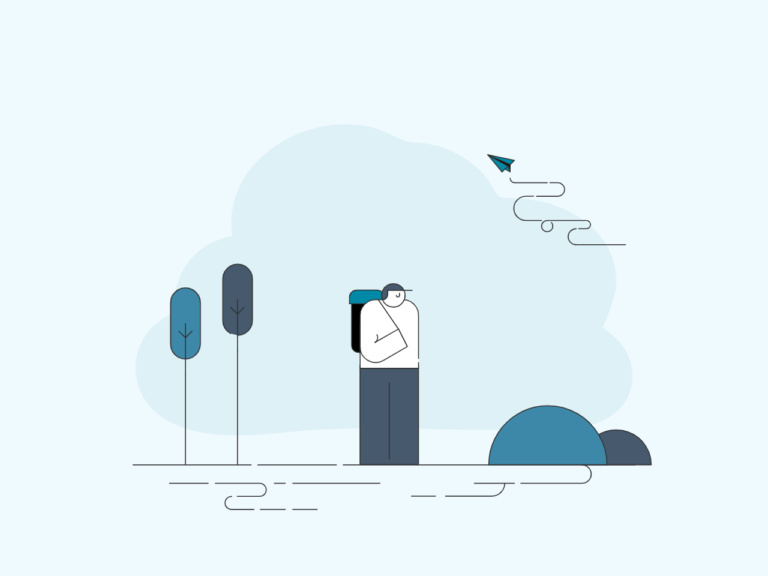For centuries, knowledge was passed on as students sat at the feet of their master. By now we are sitting on chairs and instead of a master there is a speaker in front of us. Otherwise, however, little has often changed in the frontal style: One person speaks, many others listen. Today we know that this learning model is extremely inefficient. Studies have shown that knowledge is almost impossible to absorb through passive listening (Freeman et al. 2014, p. 8410). Experiments also show that even reading vocabulary is not very promising. In contrast, it is much more likely to remember new words when they are written and spoken. Even more helpful is the association of words with mental images, fantasies, or memories (Bransford et al. 2000, p. 124). The more intensively our various mental abilities have been used, the easier it is to retain new information. The reason for this is provided by the structure of the brain.
The plasticity of our brain
Our brain consists of 100 billion neurons. Each neuron has an average of 1,000 synapses through which it can exchange information with other nerve cells (Breitenstein 2012, p. 407). For the brain to learn, synapses must be formed between neurons. This growth process does not happen suddenly, but occurs more rapidly the better it is embedded in prior knowledge (Harlen and James 1997, p. 369). The prerequisite for this is that the neurons receive repeated stimuli to exchange information. A single pulse is not enough. Furthermore, the brain’s performance is based on the number of synapses. Only when nerve cells are interconnected can they work effectively. The more connections they make, the more powerful our thinking becomes (Bransford et al. 2000, p. 116).
Because of its organization, we speak of the plasticity, the changeability, of the brain. Because when new synapses form, the brain always changes as a whole, because new transmission pathways emerge. Learning therefore always means changing oneself. We retain this capacity for change into old age (Hall et al. 2014, p. 74). Based on these discoveries, learning researchers wanted to know what the brain needed for a stimulus to form new synapses. As a result, it is not repetition that matters, but learning through new experiences (Bransford et al. 2000, p. 120). This finding confirms learning psychology research on successful learning. They were able to show that there are surface and deep learning strategies. In asurface approach, information is repeated frequently until it is firmly anchored in the brain. Even today, this strategy is used successfully, for example, when learning vocabulary. However, many of us are also familiar with it from studying for exams: with the result that a large part of what was learned was already forgotten the day after the exam (Creß 2006, p. 371).
Deep learning through Active Learning
The strategy ofdeep learning is more sustainable. It selectively combines the new information with previous knowledge to help the brain learn (Harlen and James 1997, p. 369). In addition, deep learning emphasizes conveying information along with overarching ideas to better understand context. This ensures that the brain can independently acquire and store new information in the future. At the same time, the communication of overarching ideas and connections takes advantage of the brain’s property of being itself organized by patterns and rules (Bransford et al. 2000, p. 124). New knowledge is thus not only classified into existing patterns, it also ensures that patterns can be reconsidered and changed.
This makes it clear that the brain’s plasticity is perfectly adapted to the complex world in which we live. Both at the level of cells and at the level of knowledge, the brain can reorganize itself again and again through learning experiences. It does not work statically, but is subject to permanent changes. Deep learning is one of the most important stimuli through which the brain can be provided with new knowledge in a targeted and long-lasting manner (Houghton 2004, p. 9). The way in which this is accomplished is called Active Learning in pedagogy and was first explained systematically by Bonwell and Eison (1991).
Active Learning utilizes the brain’s ability to acquire new knowledge on its own. Information is not recited as in frontal instruction, but must be found through searching and thinking and reconciled with existing knowledge (Alanah Mitchell, Stacie Petter, Albert L. Harris 2017, p. 23). The thinking tasks required for this are so varied and challenging that what is learned is (almost) retained by itself. It is also ideal if Active Learning not only imparts complex knowledge, but if the learners are also particularly motivated and emotionally involved due to the closeness to life and relevance of the challenges.
With simulations to long-term success
For this reason, simulations are an ideal technique for sustained and deep learning. Their effectiveness in generating new knowledge and at the same time applying it practically as skills has already been successfully demonstrated in many studies (Choi et al. 2017; Abelsson 2017; Lateef 2010; Landriscina 2013). Simulations are also an effective method of learning in the field of management training and should be conducted with real people as close to real life as possible (Hallinger et al. 2019). A subsequent reflection of the experiences by all participants makes it possible to supplement one’s own experiences with the perceptions of others. In this way, it is possible to learn directly from the complexity of social situations. In addition, there is the possibility of training one’s own emotional intelligence through the exchange (Emmerling et al. 2008). In this way, real-world simulations leverage insights from neuroscience and provide emotional experiences through which we can deeply and sustainably embed new knowledge and skills in our brains. In a business world of constant change, it is precisely this learning that is important because it deeply penetrates and stores the newly acquired knowledge so that it can be successfully applied to new challenges in the future.
Bibliography
Abelsson, Anna (2017): Learning through simulation. In: Disaster and Emergency Medicine Journal 2 (3), pp. 125-128. DOI: 10.5603/DEMJ.2017.0027.
Alanah Mitchell, Stacie Petter, Albert L. Harris (2017): Learning by Doing: Twenty Successful Active Learning Exercises for Information Systems Courses. In: Journal of Information Technology Education: Innovations in Practice 16, pp. 21-26.
Bonwell, Charles C.; Eison, James A. (1991): Active Learning. Creating excitement in the classroom. Ed. v. Association for the Study of Higher Education. ASHE-ERIC Higher Education.
Bransford, John; Brown, Ann L.; Cocking, Rodney R. (2000): How people learn. Brain, mind, experience, and school. Expanded Edition. Washington, D.C.: National Academy Press.
Breitenstein, Caterina (2012): Learning from a Neuroscientific Perspective: From Association to Cognition. In: Discourse Childhood and Adolescence Research (4), pp. 405-418.
Choi, Wayne; Dyens, Ollivier; Chan, Teresa; Schijven, Mariles; Lajoie, Susanne; Mancini, Mary E. et al. (2017): Engagement and learning in simulation: recommendations of the Simnovate Engaged Learning Domain Group. In: BMJ STEL 3 (Suppl 1), S23-S32. DOI: 10.1136/bmjstel-2016-000177.
Creß, Ulrike (2006): Learning orientations, learning styles, learning types, and cognitive styles. In: Heinz Mandl (Ed.): Handbuch Lernstrategien. Göttingen, Bern, Vienna, Toronto, Seattle, Oxford, Prague: Hogrefe, pp. 365-377.
Emmerling, Robert J.; Shanwal, Vinod K.; Mandal, Manas K. (Eds.) (2008): Emotional Intelligence. Theoretical and cultural perspectives. New York: Nova Science Publishers.
Freeman, Scott; Eddy, Sarah L.; McDonough, Miles; Smith, Michelle K.; Okoroafor, Nnadozie; Jordt, Hannah; Wenderoth, Mary Pat (2014): Active learning increases student performance in science, engineering, and mathematics. In: Proceedings of the National Academy of Sciences of the United States of America 111 (23), pp. 8410-8415. DOI: 10.1073/pnas.1319030111.
Hall, Kathy; Curtin, Alicia; Rutherford, Vanessa (2014): Networks of mind. Learning, culture, neuroscience. London, New York: Routledge.
Hallinger, Philip; Lu, Jiafang; Showanasai, Parinya (2019): Seeing and Hearing is Believing, But Eating is Knowing: A Case Study of Implementing PBL in a Master of Educational Management Program. In: Mahnaz Moallem, Woei Hung, and Nada Dabbagh (eds.): The Wiley handbook of problem-based learning. Hoboken NJ: John Wiley [&] Sons (Wiley handbooks in education), pp. 483-506.
Harlen, Wynne; James, Mary (1997): Assessment and Learning: differences and relationships between formative and summative assessment. In: Assessment in Education: Principles, Policy [&] Practice 4 (3), pp. 365-379. DOI: 10.1080/0969594970040304.
Houghton, Warren (2004): Learning and Teaching Theory for Engineering Academics. Engineering Subject Centre Guide: The Higher Education Academy.
Landriscina, Franco (2013): Simulation and Learning. New York, NY: Springer New York.
Lateef, Fatimah (2010): Simulation-based learning: Just like the real thing. In: Journal of emergencies, trauma, and shock 3 (4), pp. 348-352. DOI: 10.4103/0974-2700.70743.










